3592-47-0
| 中文名 | 苯甲醛-α-d1 |
|---|---|
| 英文名 | deuterio(phenyl)methanone |
| 中文别名 |
苯甲醛-d1
苯甲醛-d |
| 英文别名 |
Benzaldehyde-|A-d1
MFCD00084120 |
| 密度 | 1.055 g/cm3at 25°C (lit.) |
|---|---|
| 沸点 | 178ºC |
| 熔点 | 26°C (lit.) |
| 分子式 | C7H6O |
| 分子量 | 106.12200 |
| 闪点 | 64 °C - closed cup (lit.) |
| 精确质量 | 106.04200 |
| PSA | 17.07000 |
| LogP | 1.49910 |
| 外观性状 | 液体 |
| 储存条件 | 密封于阴凉处避光保存 |
| 稳定性 | 避免 强氧化剂 , 强还原剂 , 强碱 避免光,明火 |
| 分子结构 | 1、 摩尔折射率:33.00 2、 摩尔体积(m3/mol):101.0 3、 等张比容(90.2K):252.3 4、 表面张力(dyne/cm):38.8 5、 介电常数(F/m):无可用 6、 偶极距(D):无可用 7、 极化率(10 -24cm 3):13.08 |
| 计算化学 | 1.疏水参数计算参考值(XlogP):无 2.氢键供体数量:0 3.氢键受体数量:1 4.可旋转化学键数量:1 5.互变异构体数量:无 6.拓扑分子极性表面积17.1 7.重原子数量:8 8.表面电荷:0 9.复杂度:72.5 10.同位素原子数量:1 11.确定原子立构中心数量:0 12.不确定原子立构中心数量:0 13.确定化学键立构中心数量:0 14.不确定化学键立构中心数量:0 15.共价键单元数量:1 |
| 更多 | 1. 性状:未确定 2. 密度(g/mLat 25°C):1.055 3. 相对蒸汽密度(g/mL,空气=1):未确定 4. 熔点(ºC):-26 5. 沸点(ºC,常压):未确定 6. 沸点(ºC 760mmHg):178-179 7. 折射率(n20/D):1.545 8. 闪点(ºC):62.8 9. 比旋光度(º):未确定 10. 自燃点或引燃温度(ºC):未确定 11. 蒸气压(mmHg,37ºC):未确定 12. 饱和蒸气压(kPa,114.4 ºC):未确定 13. 燃烧热(KJ/mol):未确定 14. 临界温度(ºC):未确定 15. 临界压力(MPa):未确定 16. 油水(辛醇/水)分配系数的对数值:未确定 17. 爆炸上限(%,V/V):未确定 18. 爆炸下限(%,V/V):未确定 19. 溶解性:未确定 |
|
SECTION 1: Identification of the substance/mixture and of the company/undertaking Product identifiers : Benzaldehyde-α-d1 Product name REACH No.: A registration number is not available for this substance as the substance or its uses are exempted from registration, the annual tonnage does not require a registration or the registration is envisaged for a later
registration deadline. CAS-No.: 3592-47-0 SECTION 2: Hazards identification Classification of the substance or mixture Classification according to Regulation (EC) No 1272/2008 Acute toxicity, Oral (Category 4), H302 Acute toxicity, Dermal (Category 4), H312 Skin irritation (Category 2), H315 Respiratory sensitisation (Category 1), H334 Skin sensitisation (Category 1), H317 For the full text of the H-Statements mentioned in this Section, see Section 16. Not a hazardous substance or mixture according to EC-directives 67/548/EEC or 1999/45/EC. Label elements Labelling according Regulation (EC) No 1272/2008 Pictogram Signal wordDanger Hazard statement(s) Harmful if swallowed. Harmful in contact with skin. Causes skin irritation. May cause an allergic skin reaction. May cause allergy or asthma symptoms or breathing difficulties if inhaled. Precautionary statement(s) Avoid breathing vapours. Wear protective gloves/ protective clothing. P342 + P311If experiencing respiratory symptoms: Call a POISON CENTER or doctor/ physician. Supplemental Hazardnone Statements Other hazards - none SECTION 3: Composition/information on ingredients Substances Chemical characterization : Isotopically labeled Synonyms: Benz(aldehyde-d) Formula: C7DH5O Molecular Weight: 107,13 g/mol CAS-No.: 3592-47-0 No components need to be disclosed according to the applicable regulations. For the full text of the H-Statements and R-Phrases mentioned in this Section, see Section 16 SECTION 4: First aid measures Description of first aid measures General advice Consult a physician. Show this safety data sheet to the doctor in attendance. If inhaled If breathed in, move person into fresh air. If not breathing, give artificial respiration. Consult a physician. In case of skin contact Wash off with soap and plenty of water. Consult a physician. In case of eye contact Rinse thoroughly with plenty of water for at least 15 minutes and consult a physician. If swallowed Do NOT induce vomiting. Never give anything by mouth to an unconscious person. Rinse mouth with water. Consult a physician. Most important symptoms and effects, both acute and delayed The most important known symptoms and effects are described in the labelling (see section 2.2) and/or in section 11 Indication of any immediate medical attention and special treatment needed no data available SECTION 5: Firefighting measures Extinguishing media Suitable extinguishing media Use water spray, alcohol-resistant foam, dry chemical or carbon dioxide. Special hazards arising from the substance or mixture no data available Advice for firefighters Wear self contained breathing apparatus for fire fighting if necessary. Further information Use water spray to cool unopened containers. SECTION 6: Accidental release measures Personal precautions, protective equipment and emergency procedures Use personal protective equipment. Avoid breathing vapours, mist or gas. Ensure adequate ventilation. Remove all sources of ignition. Evacuate personnel to safe areas. Beware of vapours accumulating to form explosive concentrations. Vapours can accumulate in low areas. For personal protection see section 8. Environmental precautions Prevent further leakage or spillage if safe to do so. Do not let product enter drains. Discharge into the environment must be avoided. Methods and materials for containment and cleaning up Contain spillage, and then collect with an electrically protected vacuum cleaner or by wet-brushing and place in container for disposal according to local regulations (see section 13). Keep in suitable, closed containers for disposal. Reference to other sections For disposal see section 13. SECTION 7: Handling and storage Precautions for safe handling Avoid contact with skin and eyes. Avoid inhalation of vapour or mist. Keep away from sources of ignition - No smoking.Take measures to prevent the build up of electrostatic charge. For precautions see section 2.2. Conditions for safe storage, including any incompatibilities Store in cool place. Keep container tightly closed in a dry and well-ventilated place. Containers which are opened must be carefully resealed and kept upright to prevent leakage. Store under inert gas. hygroscopic Specific end use(s) Apart from the uses mentioned in section 1.2 no other specific uses are stipulated SECTION 8: Exposure controls/personal protection Control parameters Components with workplace control parameters Exposure controls Appropriate engineering controls Handle in accordance with good industrial hygiene and safety practice. Wash hands before breaks and at the end of workday. Personal protective equipment Eye/face protection Face shield and safety glasses Use equipment for eye protection tested and approved under appropriate government standards such as NIOSH (US) or EN 166(EU). Skin protection Handle with gloves. Gloves must be inspected prior to use. Use proper glove removal technique (without touching glove's outer surface) to avoid skin contact with this product. Dispose of contaminated gloves after use in accordance with applicable laws and good laboratory practices. Wash and dry hands. The selected protective gloves have to satisfy the specifications of EU Directive 89/686/EEC and the standard EN 374 derived from it. Body Protection Complete suit protecting against chemicals, The type of protective equipment must be selected according to the concentration and amount of the dangerous substance at the specific workplace. Respiratory protection Where risk assessment shows air-purifying respirators are appropriate use a full-face respirator with multi-purpose combination (US) or type ABEK (EN 14387) respirator cartridges as a backup to engineering controls. If the respirator is the sole means of protection, use a full-face supplied air respirator. Use respirators and components tested and approved under appropriate government standards such as NIOSH (US) or CEN (EU). Control of environmental exposure Prevent further leakage or spillage if safe to do so. Do not let product enter drains. Discharge into the environment must be avoided. SECTION 9: Physical and chemical properties Information on basic physical and chemical properties a) AppearanceForm: liquid b) Odourno data available c) Odour Thresholdno data available d) pHno data available e) Melting point/freezingMelting point/range: -26 °C - lit. point f) Initial boiling point and 178 - 179 °C - lit. boiling range g) Flash point64,00 °C - closed cup h) Evapouration rateno data available i) Flammability (solid, gas) no data available j) Upper/lowerUpper explosion limit: 8,50 %(V) flammability orLower explosion limit: 1,40 %(V) explosive limits k) Vapour pressure5 hPa at 45,00 °C l) Vapour densityno data available m) Relative density1,055 g/mL at 25 °C1,055 g/cm3 at 25 °C n) Water solubilityno data available o) Partition coefficient: n- log Pow: 1,500 octanol/water p) Auto-ignitionno data available temperature q) Decompositionno data available temperature r) Viscosityno data available s) Explosive propertiesno data available t) Oxidizing propertiesno data available Other safety information no data available SECTION 10: Stability and reactivity Reactivity no data available Chemical stability Stable under recommended storage conditions. Possibility of hazardous reactions no data available Conditions to avoid Heat, flames and sparks. Incompatible materials Strong oxidizing agents, Strong reducing agents, Strong bases, Alkali metals, Aluminium, Iron, phenols, Oxygen Hazardous decomposition products no data available In the event of fire: see section 5 SECTION 11: Toxicological information Information on toxicological effects Acute toxicity LD50 Oral - rat - 1.300 mg/kg Remarks: Behavioral:Somnolence (general depressed activity). Behavioral:Coma. LD50 Dermal - rabbit - 1.250 mg/kg Skin corrosion/irritation Skin - rabbit Result: Skin irritation - 24,00 h Serious eye damage/eye irritation Eyes - rabbit Result: Mild eye irritation Respiratory or skin sensitisation Germ cell mutagenicity Carcinogenicity This product is or contains a component that is not classifiable as to its carcinogenicity based on its IARC, ACGIH, NTP, or EPA classification. IARC:No component of this product present at levels greater than or equal to 0.1% is identified as probable, possible or confirmed human carcinogen by IARC. Reproductive toxicity no data available Specific target organ toxicity - single exposure no data available Specific target organ toxicity - repeated exposure no data available Aspiration hazard no data available Additional Information RTECS: Not available To the best of our knowledge, the chemical, physical, and toxicological properties have not been thoroughly investigated. SECTION 12: Ecological information Toxicity Toxicity to fishLC50 - Lepomis macrochirus - 1,07 mg/l - 96,0 h LOEC - Pimephales promelas (fathead minnow) - 0,45 mg/l - 7,0 d NOEC - Pimephales promelas (fathead minnow) - 0,22 mg/l - 7,0 d LC50 - Leuciscus idus (Golden orfe) - 62 mg/l - 48,0 h Persistence and degradability no data available Bioaccumulative potential no data available Mobility in soil no data available Results of PBT and vPvB assessment PBT/vPvB assessment not available as chemical safety assessment not required/not conducted Other adverse effects Toxic to aquatic life. no data available SECTION 13: Disposal considerations Waste treatment methods Product This combustible material may be burned in a chemical incinerator equipped with an afterburner and scrubber. Offer surplus and non-recyclable solutions to a licensed disposal company. Contaminated packaging Dispose of as unused product. SECTION 14: Transport information UN number ADR/RID: 1990IMDG: 1990IATA: 1990 UN proper shipping name ADR/RID: BENZALDEHYDE IMDG: BENZALDEHYDE IATA:Benzaldehyde Transport hazard class(es) ADR/RID: 9IMDG: 9IATA: 9 Packaging group ADR/RID: IIIIMDG: IIIIATA: III Environmental hazards ADR/RID: noIMDG Marine pollutant: noIATA: no Special precautions for user no data available SECTION 15: Regulatory information This safety datasheet complies with the requirements of Regulation (EC) No. 1907/2006. Safety, health and environmental regulations/legislation specific for the substance or mixture no data available Chemical Safety Assessment SECTION 16 - ADDITIONAL INFORMATION N/A |
| 符号 |


GHS07, GHS08 |
|---|---|
| 信号词 | Danger |
| 危害声明 | H302-H312-H315-H317-H334 |
| 警示性声明 | P261-P280-P342 + P311 |
| 危害码 (欧洲) | Xn |
| 风险声明 (欧洲) | R22;R40;R36/37/38;R42/43 |
| 安全声明 (欧洲) | S26;S36 |
| 危险品运输编码 | UN 1990 9/PG 3 |
| 上游产品 9 | |
|---|---|
| 下游产品 8 | |



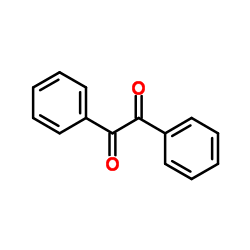
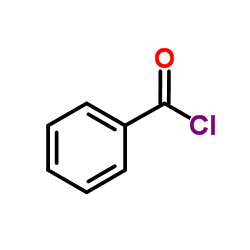
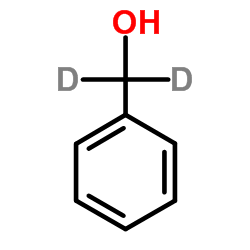
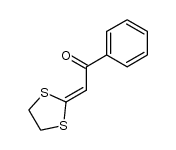
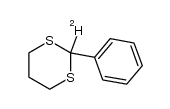
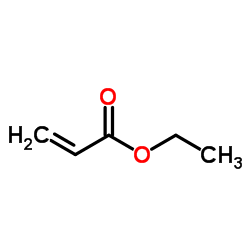
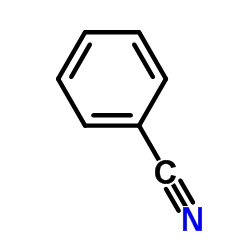
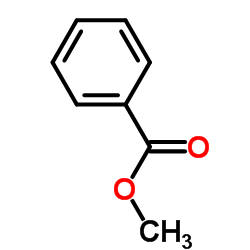
![(+/-)-[α-(2)H]-benzyl alcohol结构式](https://image.chemsrc.com/caspic/370/3481-15-0.png)
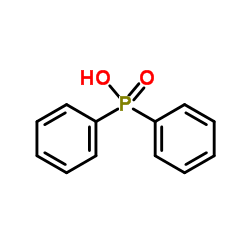


![3-(methyl-d)-2-phenylimidazo[1,2-a]pyridine结构式](https://image.chemsrc.com/caspic/222/1404294-17-2.png)
![3-(methyl-d3)-2-phenylimidazo[1,2-a]pyridine结构式](https://image.chemsrc.com/caspic/146/1404294-19-4.png)
![3-methyl-2-phenylimidazo[1,2-a]pyridine结构式](https://image.chemsrc.com/caspic/071/34658-68-9.png)

